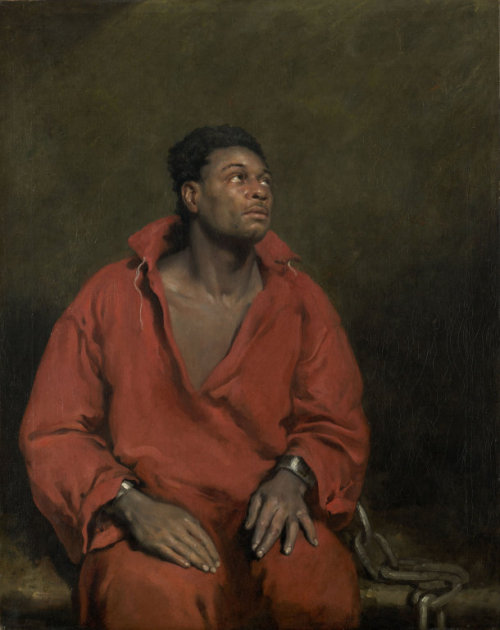medievalpoc:greythegryphon:medievalpoc:1800s Week!John Phillip SimpsonThe Captive Slave (Ira Aldridg
medievalpoc:greythegryphon:medievalpoc:1800s Week!John Phillip SimpsonThe Captive Slave (Ira Aldridge as model)England (1827)Oil on canvas 50 x 40 in. (127 x 101.5 cm)The Art Institute of ChicagoThe story of this artwork is quite remarkable.The Art Institute of Chicago announced in 2009 that it had acquired a painting that had not been viewed or on display for over 180 years.This is that painting.There is sufficient evidence to assume that this painting was done by Simpson in collaboration with Aldridge as an abolitionist statement. It was first displayed in 1827 at the Royal Academy of Arts Along with this poem:But Ah! what wish can prosper, or what prayerFor merchants rich in cargoes of despair-Cowper, 1782Recommended Reading:“The Captive Slave” by John Simpson (1782-1847): A rediscovered masterpieceMartin PostleThe British Art Journal, Vol. 9, No. 3 (Spring 2009), pp. 18-26Published by: The British Art JournalArticle Stable URL: http://www.jstor.org/stable/41614836[x] [x] [x]Previous posts about Ira Aldridge from medievalpocIt will never stop hurting me how much his outfit looks like a the outfits we put prisoners in. Every time I see it I see an incarcerated man in a modern prison. And then I am again reminded that no, this is an enslaved man from nearly 200 years ago. And in that moment the parallels between those two are so sharp and so poignant that I have to stop for a minute and just think about the world. And I want to scream and cry and burn this nation down and start fresh. But instead I just find myself a little more dedicated to my activism and a little more humble about the comforts and privileges afforded to me as a white person by other white people at the cost of the lives and freedom of other people.I think the parallel hit a lot of people really hard.I just wanted to point out that this isn’t an enslaved man-this is Ira Aldridge, an American actor working (and wildly popular) in Britain during this time. He collaborated with the artist for an Abolitionist work.This is not a portrait of someone who had no choice over being painted.I think it’s an important distinction to make because of both the effectiveness of his pose and expression; also to keep in mind the directed, purposeful agency of the man in this painting who is choosing to pose and express the deep emotions he feels. He is very much a part of this artwork’s creation and power.Another painting of Aldridge performing: -- source link
Tumblr Blog : medievalpoc.tumblr.com

